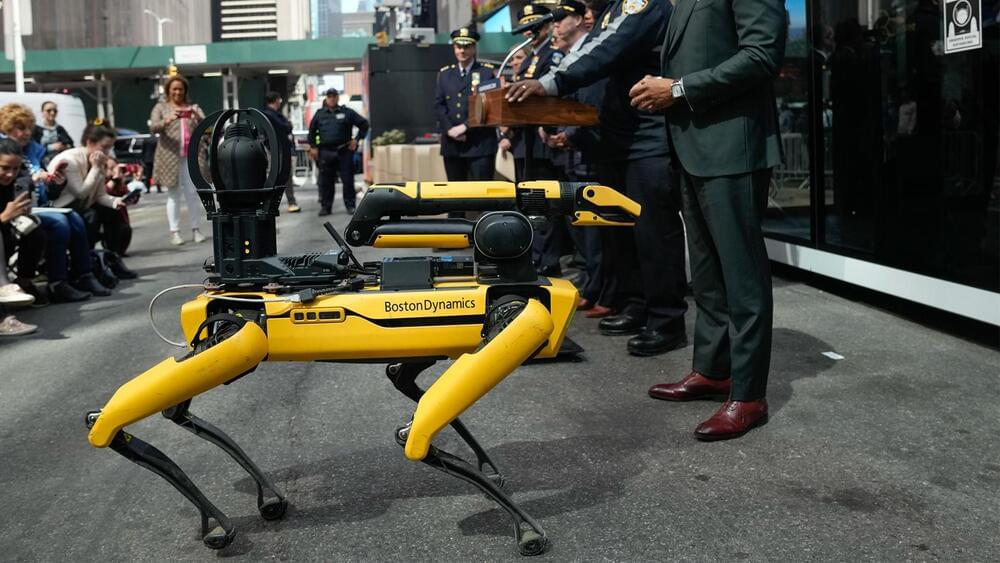Large brains, long life spans and elaborate problem-solving in crows makes them surprisingly similar to humans.



That plateau is called “mortality compression”—where the age of death remains relatively fixed. It’s been a consistent phenomenon for folks born up until the 1900s. But according to the study, “mortality postponement”—where the maximum age at death is on the rise—seems to be more common in those born between 1910 and 1950. This means the oldest people born in that timeframe have a solid chance at stretching their years beyond 120.
“As these cohorts attain advanced ages in coming decades, longevity records may increase significantly,” McCarthy says in the news release. “Our results confirm prior work suggesting that if there is a maximum limit to the human lifespan, we are not yet approaching it.”

Scientists have created thin, elastic bottlebrush polymer films that can function as artificial muscles at significantly lower voltages than currently available materials, potentially enabling their use in safer medical devices and artificial organs.
Whether wriggling your toes or lifting groceries, muscles in your body smoothly expand and contract. Some polymers can do the same thing — acting like artificial muscles — but only when stimulated by dangerously high voltages. Now, researchers in ACS Applied Materials & Interfaces report a series of thin, elastic films that respond to substantially lower electrical charges. The materials represent a step toward artificial muscles that could someday operate safely in medical devices.
Artificial muscles could become key components of movable soft robotic implants and functional artificial organs. Electroactive elastomers, such as bottlebrush polymers, are attractive materials for this purpose because they start soft but stiffen when stretched. And they can change shape when electrically charged. However, currently available bottlebrush polymer films only move at voltages over 4,000 V, which exceeds the 50 V maximum that the U.S. Occupational Safety & Health Administration states is safe. Reducing the thickness of these films to less than 100 µm could lower the required voltages, but this hasn’t been done successfully yet for bottlebrush polymers. So, Dorina Opris and colleagues wanted to find a simple way to produce thinner films.


Sony has announced that it intends to integrate its Aitrios edge computing (on-chip) AI platform into future iterations of the Rasberry Pi.
The highly popular Rasberry Pi will soon get artificial intelligence (AI) functions, according to an announcement from Sony. In what it has called a “strategic investment,” Sony decided to bring its AI technology to a broader market.
This announcement comes hot off the heels of other news that Raspberry Pi Limited, the UK-based company and creators of the Raspberry Pi, secured an undisclosed investment from Sony Semiconductor Solutions, a subsidiary of Sony Corporation.
Jeesoen/iStock.

Along with ‘Spot’ the Digidog, the New York Police Department has revealed other new security technologies to improve safety in New York.
The New York Police Department (NYPD) is taking crime control, and public security to the next level by introducing a variety of crime-fighting robots to patrol subway stations throughout New York.
Along with Digidog, the NYPD has revealed a few other new security technologies to improve safety in New York.
NYC’s Mayor Office.
Two robotic dogs have joined the ranks of the New York Police Department (NYPD). They were unveiled at the Times Square on April 11.

The protoplanet was found surrounding HD 169,142, a star located 374 light years from our solar system.
Astronomers have caught a rare glimpse of a planet’s formation. This is only the third time scientists have discovered a protoplanet — an early stage in forming a planet, where cosmic material clumps in a disk surrounding newborn stars.
The observation of new protoplanet.
NASA/JPL-Caltech.
The protoplanet surrounded HD 169,142, a star located 374 light years from our solar system. PDS 70 b and c are the other two recorded protoplanets, which orbit the star PDS 70.
I for one welcome our godlike AI overlords we should be so lucky to have them lol 😆 😄They can help with humanities homework 😄
With algorithms starting to govern more and more aspects of our lives, it was only a matter of time until someone started to deify them.

This could lead to chat gpt infinite ♾️ ✨️
Machine learning is a fascinating and exciting field within computer science. Recently, this excitement has been transferred to the quantum information realm. Currently, all proposals for the quantum version of machine learning utilize the finite-dimensional substrate of discrete variables. Here we generalize quantum machine learning to the more complex, but still remarkably practical, infinite-dimensional systems. We present the critical subroutines of quantum machine learning algorithms for an all-photonic continuous-variable quantum computer that can lead to exponential speedups in situations where classical algorithms scale polynomially. Finally, we also map out an experimental implementation which can be used as a blueprint for future photonic demonstrations.